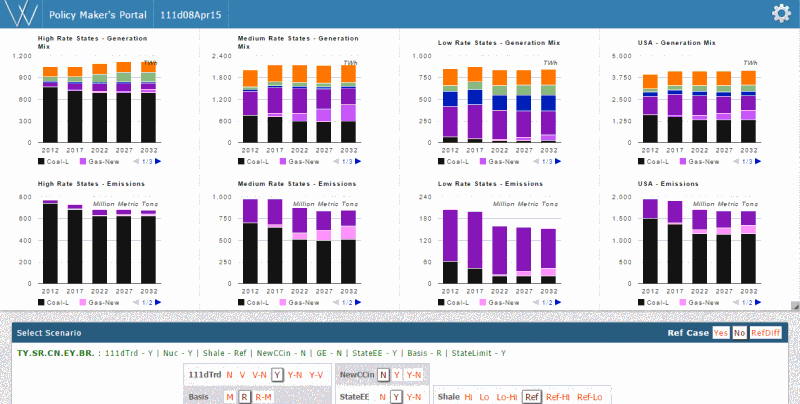FACETS Analysis of the proposed CLEAN POWER PLAN
FACETS was used to explore the implementation choices EPA proposed for the states under the draft Clean Power Plan, released in June 2014. We found that emissions reductions ranged widely across implementation scenarios, offering implications for design of the final rule.
Motion chart of generation and emissions in 40 111d scenarios (Click to view. The video below explains how to use the chart controls.)
We modeled 40 possible permutations of potential final rule policies and economic variables, including high and low natural gas price scenarios, whether or not interstate trading in emissions credits is allowed, and whether states stay with emissions rate targets set by EPA or convert to mass-based targets. By modeling 40 versions of the final version of 111d with realistic, state-level constraints we were able to see differences in impacts that have not emerged from prior analyses by other researchers.
Our findings suggest that 111d can significantly reduce greenhouse gas emissions from the US power sector. However, if EPA allows emissions credits trading under 111d, it must be careful to avoid creating perverse incentives for new generation to migrate to high emissions-rate states. Our findings also clarify the important role that energy efficiency can play in reducing the risk of this kind of emissions “leakage” by reducing the need for new power plants.
The paper describing our findings can be downloaded here. The analysis video on the right discusses our results and their implications in detail. You can explore the results using the motion chart, which provides a time-animatable scatterplot of national emissions and generation by type across the 42 scenarios, and the results portal, which provides detailed generation and emissions results for states by rate class.

